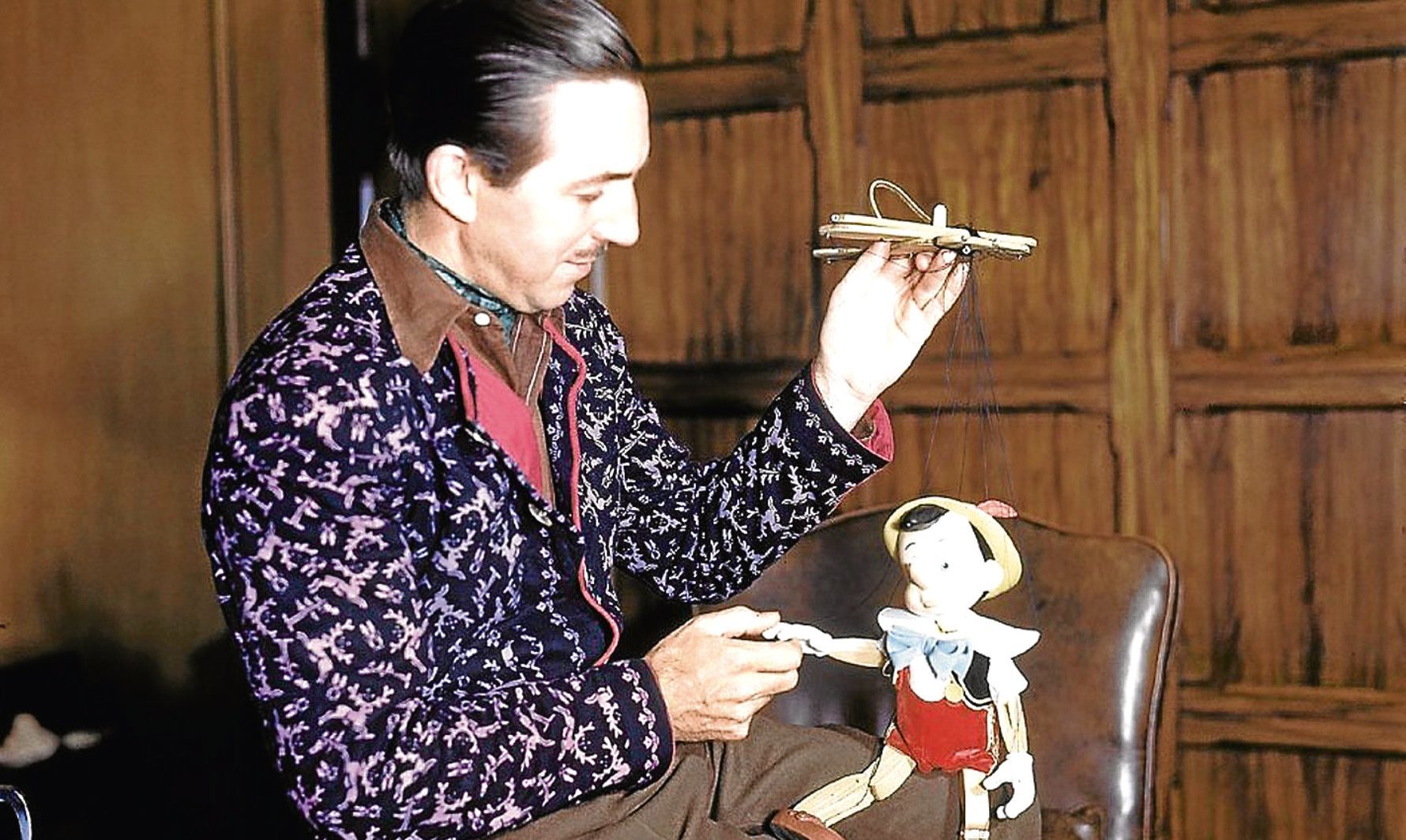
WALT DISNEY seemed destined to work in animation, having been keen on drawing from a very early age.
He died at the age of 65 on December 15, 1966, making this year the 50th anniversary of his death.
Here we pay tribute to the man who brought cartoon magic to our cinemas.
Born on December 5, 1901, Walt was never a very academic boy, being a rather-inattentive student and drawing constantly.
In fact, he dropped out of school at the age of just 16.
He’d been employed in jobs while at school, helping his father deliver newspapers and later working for a jelly and fruit juice company.
However, with America becoming involved In the First World War, Walt wanted to do his bit, gaining employment with the Red Cross Ambulance Corps by forging his birth certificate — the minimum age requirement was 17.
After driving Red Cross officials around France, he was discharged in 1919.
His war duties completed, Walt turned his attention back to animation, and moved to Kansas City, hoping to find work there.
After struggling to make a go of one business venture in 1923, he moved to Hollywood and, the same year, he and brother Roy set up the Disney Brothers Studio.
They began working on a regular character and created a series about Oswald the Lucky Rabbit.
Walt was dealt a terrible blow, however, when he lost the rights to the story, and several of his staff were poached in a corporate dispute, in 1928.
Looking to create a new character, he came up with the idea of Mickey Mouse — or Mortimer, as he was known initially.
Making his debut in a film called Steamboat Willie, the revered rodent quickly became a hit, spawning Mickey Mouse Clubs for children, along with merchandise.
Walt adored his little mouse mate and even lent him his voice for a while until other commitments meant that his voiceover work was no longer possible.
Mickey’s popularity was such that other characters soon followed — girlfriend Minnie, Pluto, Goofy and Donald Duck, to name just a few.
Speaking of Donald, had you ever heard about the part that he played in the Second World War?
Walt produced wartime propaganda films for the US Government, and they starred none other than a certain little duck friend of his — yup, Donald.
Disney were also responsible for creating educational films for various federal agencies, including The New Spirit, in 1942.
The project was intended to be a way to encourage people to continue paying their income taxes whilst also supporting the war effort.
Prior to the film’s release, Walt hadn’t demonstrated his political beliefs, and was hesitant to produce any propaganda.
He did, in the end, however, release such titles as Der Fuerher’s Face and Victory Through Air Power, making a big impression on the likes of President Roosevelt and Winston Churchill, who both watched the latter.
Walt’s movies continued to impress politicians and the public alike, with the 50s seeing the arrivals of Cinderella and Peter Pan.
However, Walt didn’t stop at producing animation.
He wanted it to be possible for us to immerse ourselves in the magic of the movies he created, and the result of that was the opening of Disneyland, in California, in 1955.
After only four weeks, the park had been visited by more than half a million people.
So phenomenally successful was the venture that Walt even had an apartment built there for himself and his family, and other parks soon followed.
In fact, Disney is still the most-visited theme-park company in the world.
The 60s welcomed yet more film classics, with 101 Dalmatians and The Jungle Book but, unfortunately, Walt wouldn’t live to see the 70s.
A long-time smoker, he was diagnosed with lung cancer in the November of 1966. He passed away the following month.
Contrary to what some people believe, he was not cryogenically frozen, but rather cremated — and if anyone should know, it would be his daughter Diane Disney Miller, who opened the Walt Disney Family Museum in 2009 in San Francisco, to help put the rumours to rest.
Nowadays, a light is kept on near his Disneyland apartment, a lovely gesture to pay respect to him.
If anyone deserves the tribute, it’s Walt who, according to the Guinness World Records website, holds the record for Most Oscar Nominations.
During his career, he was nominated for no fewer than 64 awards, the last of which he won posthumously in 1969, for Winnie the Pooh and the Blustery Day.
Of all the awards he was put forward for, he won 26.
In an age of modern technology, Walt’s company is still thriving, having teamed up with Pixar, a company who make computer-generated movies including Toy Story.
Walt had already left behind a legacy of classic movies, and he’d feel proud to know that his name is still held so dearly.
READ MORE
Frozen on Ice: The backstage secrets of Disney’s biggest hit
It Disney get better than this! Florida is perfect for young families and the young at heart

Enjoy the convenience of having The Sunday Post delivered as a digital ePaper straight to your smartphone, tablet or computer.
Subscribe for only £5.49 a month and enjoy all the benefits of the printed paper as a digital replica.
Subscribe